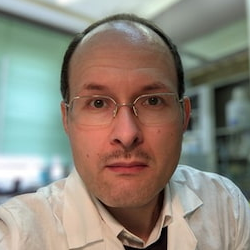In Vitro and In Vivo Studies of Natural Antimicrobial Peptides as Promising Therapeutic Agents
A special issue of Pharmaceutics (ISSN 1999-4923). This special issue belongs to the section "Biopharmaceutics".
Deadline for manuscript submissions: 30 June 2024 | Viewed by 5907
Special Issue Editors
Interests: antibiotics; antimicrobial peptides; bacteriocins; lantibiotics; pediocin-like peptides; molecular evolution; protein expression and purification; synthetic biology
Special Issues, Collections and Topics in MDPI journals
Interests: plant innate immunity; plant pathogenesis related proteins (PR-proteins); lipid transfer proteins (LTPs); defensins; Bet v 1 homologues; lipid binding; antimicrobial activity; membrane permeability; recombinant expression of proteins; plant allergens; allergy; sensitization
Special Issues, Collections and Topics in MDPI journals
Special Issue Information
Dear Colleagues,
We are pleased to introduce a Special Issue of MDPI Pharmaceutics dedicated to ribosomally synthesized antimicrobial peptides (AMPs) as scaffolds for creating new promising therapeutic agents. AMPs are a diverse group of small molecules with the ability to kill or inhibit the growth of a wide range of microorganisms, including bacteria, fungi, and viruses. AMPs are essential components of innate immunity in multicellular organisms and factors that allow unicellular organisms to compete with other species for nutrients. In addition to their direct antimicrobial action, they can act as regulatory (signaling) molecules that mobilize the cells of the host organism or produce a microbial population to overcome stress conditions.
Most AMPs have a membrane-targeting mechanism of action, which is often complemented by an inhibitory effect against specific biochemical subsystems of the target cells (bacterial ribosomes, peptidoglycan or lipopolysaccharide biosynthetic paths, etc.), which makes it difficult for micro-organisms to evolve stable resistance against them. The difference in the mechanisms of action with conventional antibiotics allows synergistic effects to be achieved when they are used in combination. Currently, the pharmaceutical use of AMPs is limited to probiotic formulations that contain bacteriocin-producing strains exhibiting antagonism to intestinal pathogens. Nevertheless, extensive work is underway to evaluate the therapeutic potential of AMP preparations against systemic infections and for wound healing. The main problems of this approach are the high production cost of recombinant and synthetic AMPs, as well as their susceptibility to proteolytic degradation under physiological conditions. To date, several dozens of AMP-based drugs have undergone preclinical and clinical trials.
We hope that this Special Issue will serve as a communication platform for researchers in the field of AMPs. We invite you to send primary research manuscripts and review articles concerning the structure of AMPs, biological activity assays on cultures of pro- and eukaryotic cells, in vivo studies in animal models of infection, delivery systems, mechanisms of resistance formation, screening technologies, and rational design of therapeutically valuable analogs of natural peptides.
Dr. Sergey V. Balandin
Dr. Ekaterina I. Finkina
Guest Editors
Manuscript Submission Information
Manuscripts should be submitted online at www.mdpi.com by registering and logging in to this website. Once you are registered, click here to go to the submission form. Manuscripts can be submitted until the deadline. All submissions that pass pre-check are peer-reviewed. Accepted papers will be published continuously in the journal (as soon as accepted) and will be listed together on the special issue website. Research articles, review articles as well as short communications are invited. For planned papers, a title and short abstract (about 100 words) can be sent to the Editorial Office for announcement on this website.
Submitted manuscripts should not have been published previously, nor be under consideration for publication elsewhere (except conference proceedings papers). All manuscripts are thoroughly refereed through a single-blind peer-review process. A guide for authors and other relevant information for submission of manuscripts is available on the Instructions for Authors page. Pharmaceutics is an international peer-reviewed open access monthly journal published by MDPI.
Please visit the Instructions for Authors page before submitting a manuscript. The Article Processing Charge (APC) for publication in this open access journal is 2900 CHF (Swiss Francs). Submitted papers should be well formatted and use good English. Authors may use MDPI's English editing service prior to publication or during author revisions.
Keywords
- antibiotics
- antimicrobial peptides (AMPs)
- bacteriocins
- preclinical and clinical trials
- drug resistance
- host defense peptides
- mechanisms of antimicrobial activity
- peptide therapeutics
- structure–activity relationships







